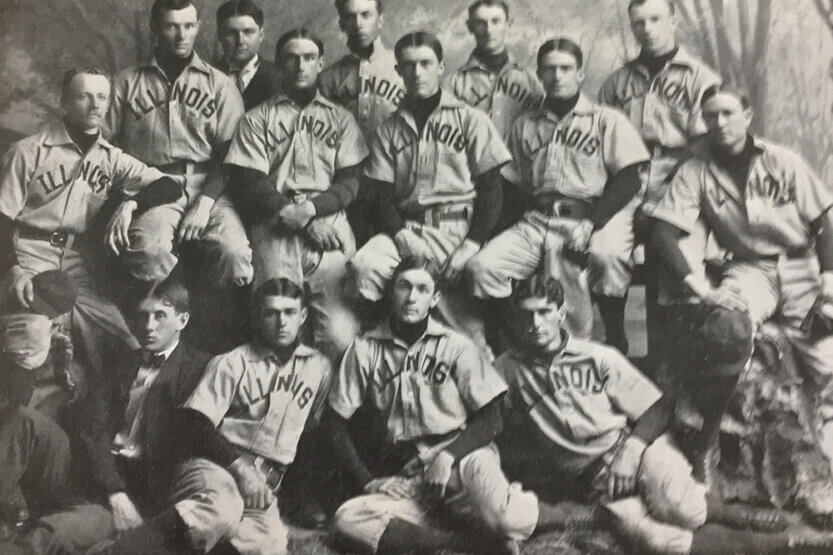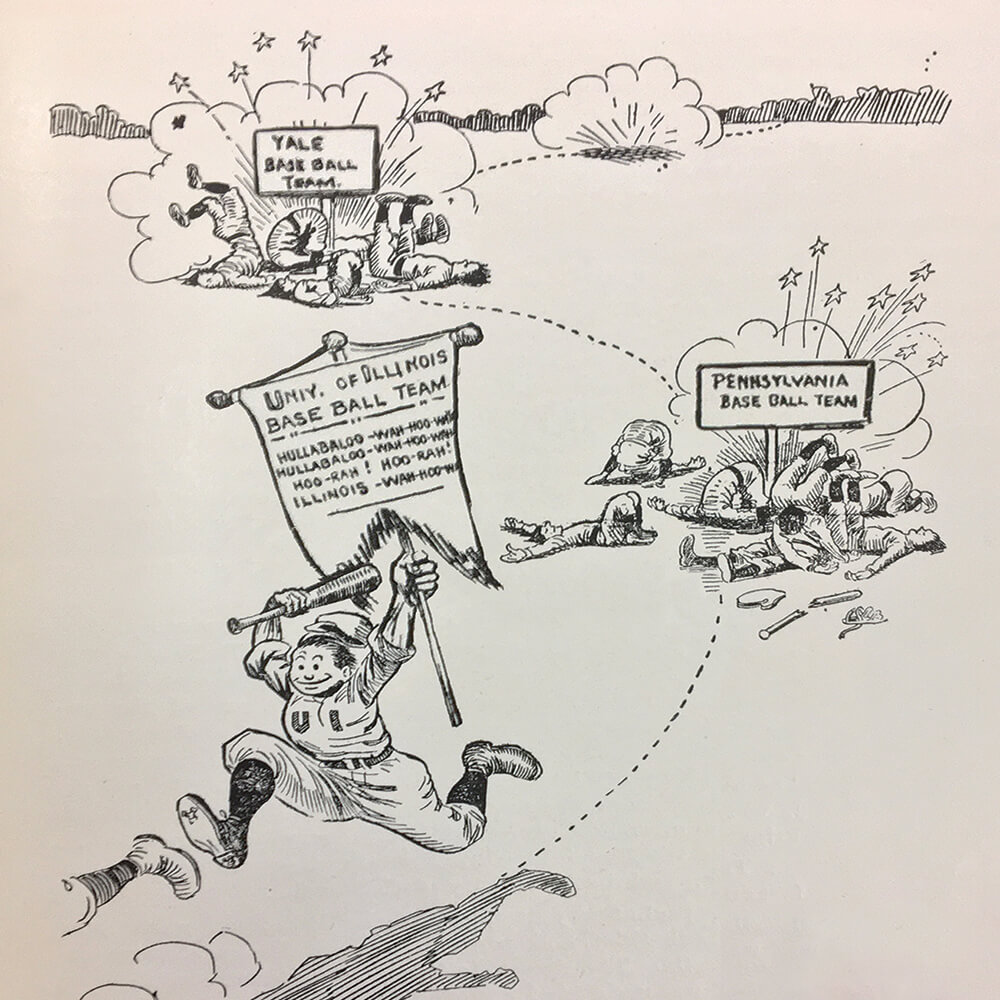Great Sports Moments: The Best Battery in Baseball
 “No stronger, better balanced college team was ever seen on the [Pennsylvania] Quaker field,” wrote the Chicago Record-Herald’s Philadelphia correspondent about the 1902 Illini. Their other opponents could say the same: Illinois gave Princeton its first home loss in three years. (Image courtesy of Illini Media)
“No stronger, better balanced college team was ever seen on the [Pennsylvania] Quaker field,” wrote the Chicago Record-Herald’s Philadelphia correspondent about the 1902 Illini. Their other opponents could say the same: Illinois gave Princeton its first home loss in three years. (Image courtesy of Illini Media) In the spring of 1902, the Illini baseball team launched the most ambitious road trip in school history—two weeks on the East Coast, visiting the cream of the college crop: Harvard, Penn, Princeton, Yale and West Point.
For all but one of those games, Illinois’ pitcher and catcher were the same: Carl Lundgren, 1902 ENG, on the mound, with a fast ball that could “burn green hickory” and a curve that made hitters jump out of the box; and Garland “Jake” Stahl, 1903 LAW, behind the plate, with the instincts of a wildcat and a throwing arm so accurate, baserunners wouldn’t even try to steal.
They were the best battery in college baseball, a one-two punch that made Illinois the terror of conference opponents from Iowa City to Ann Arbor.
By the end of their 1902 road trip, the duo had made Illinois the terror of the East, as well.
Against stiff competition, the Illini went 4-1, on what the Illio called “the most successful eastern trip ever made by a western team.” Led by their star pitcher and catcher, Illinois’ only defeat was a 2 to 1 squeaker at Harvard that local media called “the best game played on Harvard field for many a day.”
Within a year, both Lundgren and Stahl would be in the Major Leagues.
Lundgren played eight seasons for the Chicago Cubs, posting his best year in 1907—the team’s first championship season—when he won 18 games, had a 1.17 earned run average and led the majors in fewest number of hits per nine innings.
But Lundgren was also inconsistent, and the Cubs never knew which Carl would show up from year to year. Almost pathological pitching-control problems led to his release in 1909.
After his playing days were over, Lundgren went on to a long coaching career. In 1920, he succeeded the legendary George Huff as coach of the Fighting Illini and led the team to five conference titles in 14 years.
Stahl, meanwhile, bounced around the American League for nine seasons, playing most of them with the Boston Red Sox and leading the majors in home runs in 1910. He ended his career as Boston’s player-manager, winning a World Series in 1912.
More than a century later, Lundgren and Stahl leave behind a legacy that would make any baseball lifer proud. A legacy that started with Illinois’ 1902 road trip: Lundgren on the mound, Stahl behind the plate—the best battery in baseball, conquering Eastern giants, one pitch at a time.


